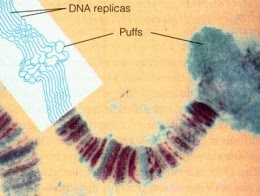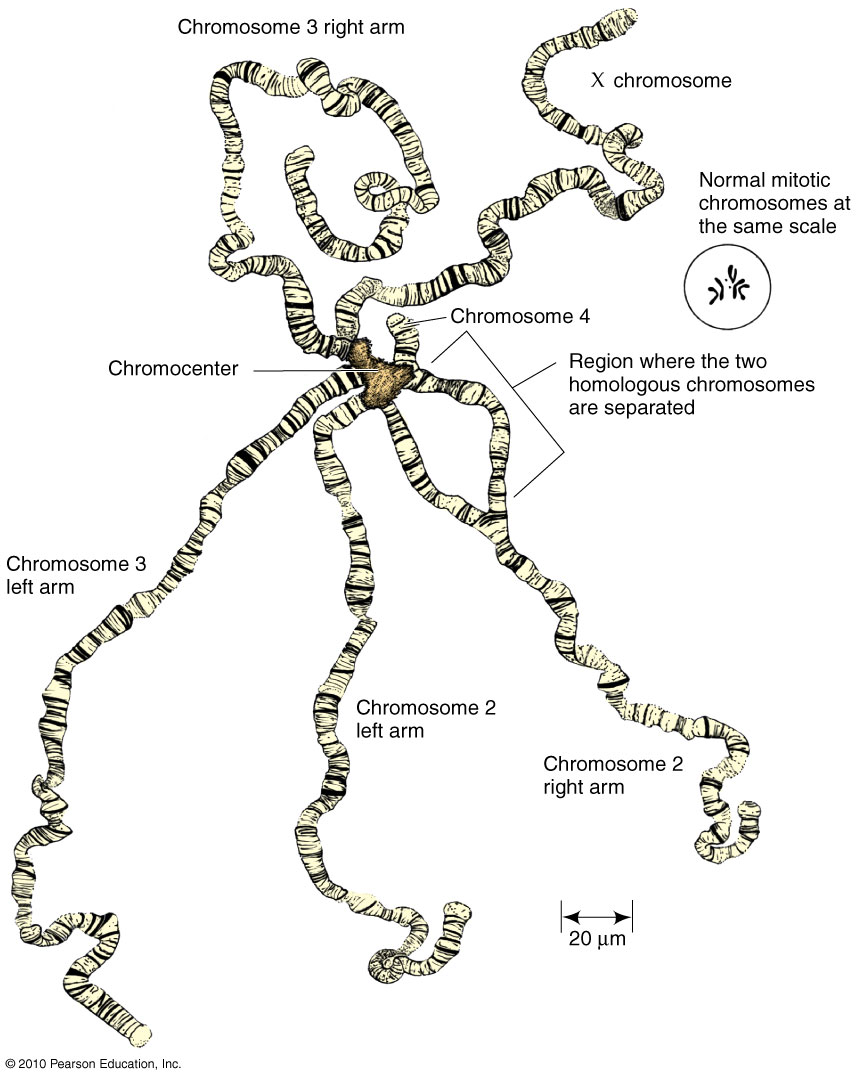How does polyteny occur?
Explain the process of polyteny and also how polytene chromosomes are formed.
Explain the process of polyteny and also how polytene chromosomes are formed.
2 Answers
Polytene chromosomes form when multiple rounds of replication produce many sister chromatids that remain fused together.
Explanation:
These chromosomal strands are formed after repeated division of the chromosome in the absence of cytoplasmic division. This type of division is called endomitosis.
Specialised cells undergo repeated rounds of DNA replication without cell division, to increase cell volume, forming a giant polytene chromosome.
Polytene chromosomes have distinct thick and thin banding patterns.
The DNA of chromosome continue to replicate multiple times as the cell remains indefinitely in S phase. Due to repeated replication many chromatids are generated in a chromosome, giving rise to polyteny.
Explanation:
Polytene means many (=poly) threads/strands(=tene). A polytene chromosome is made of many parallely arranged chromatids (even more than thousand) instead of normal two.
Such a chromosome appears due to several cycles of replication of DNA but there is no separation of chromatids (as happens during cell division): a phenomenon known as ENDODUPLICATION .
 http://1.bp.blogspot.com/-7KXxDS8Nsrc/UENEsrRPfNI/AAAAAAAAA2w/lhnjo-cQt4U/s400/chromosome+puffs.jpg
http://1.bp.blogspot.com/-7KXxDS8Nsrc/UENEsrRPfNI/AAAAAAAAA2w/lhnjo-cQt4U/s400/chromosome+puffs.jpg
Polytene chromosomes appear in somatic cells of larval diptera , e.g. Chironomous (midge), Drosophia (fruit fly), etc. The giant banded chromosomes are generally seen in cells of salivary glands, Malpighian tubules, and gut epithelium.
Cells with polytene chromosomes never divide and are later lost during metamorphosis of larva to adult insect.
The banding pattern seen on polytene chromosome is due to differential coiling of chromatin material : tightly coiled regions appear dark (=band) under microscope while loosely coiled areas (=interband) appear light in colour.
The coiled chromatin of some dark areas may uncoil and produce a 'puff', where active transcription of RNA may take place. These RNA molecules later dictate protein synthesis. Thus, specific genes carried on polytene chromosomes are expressed.
Homologous polytene chromosomes in a diploid cell remain in paired condition. Please note that the centromeric heterochromatin doe not replicate like the rest of the chromosome and centromeric regions of all polytene chromosomes of a cell may coalesce together to appear as a CHROMOCENTER .
Following illustration represents polytene chromosomes of salivary gland cells in a larva of Drosophila melanogaster.
 https://www.mun.ca/biology/scarr/iGen3_16_01_Figure-L.jpg
https://www.mun.ca/biology/scarr/iGen3_16_01_Figure-L.jpg

